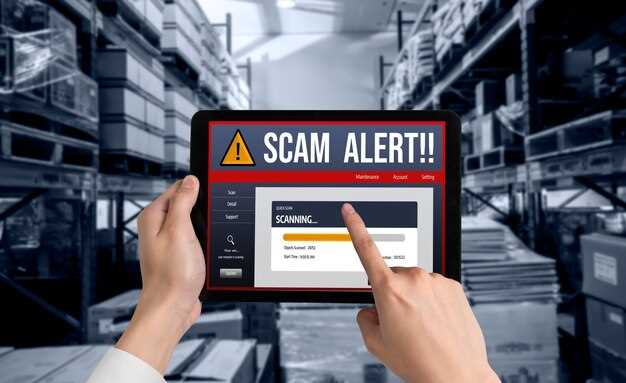
Recommendation: Implement aiml-driven anomaly monitoring across logistics flows to curb losses significantly. Whether this layer integrates with ERP, warehouse systems, or carrier networks; it should deliver early spot signals, supporting investigations; review cycles.
Broader coverage: Training data from suppliers, transporters, receipts, orders provide context; this enables spot checks, investigations; review cycles; measuring outcomes across every node, yielding broader insights; then actions for optimization.
Operational blueprint: aiml models learn from labeled, unlabeled signals; theyre designed to flag anomaly at source; allowing local teams to respond before ripple effects spread; aligning with targets like inventory accuracy, order integrity, on-time delivery; technologies across cloud edge enable near real-time response.
Governance and readiness: Reviews should formalize training data governance, ensuring privacy, compliance, bias control; theyre focused on investigations into suspicious sequences; ensuring teams responsible for orders can respond quickly; enabling reduction in loss exposure across broader network.
Real-Time Behavioral Anomaly Detection in Warehouses: Practical Implementation

Begin with a twin-track pilot deploying unsupervised models to flag behavioral deviations in material handling, inventory movement, requisitions; beyond baseline rules, integrate vision streams, sensor telemetry, access cards, identity data to generate insights on integrity.
Data sources include vision streams from cameras, motion sensors on conveyors, weight scales, RFID badges, requisition logs.
Algorithms rely on unsupervised clustering, autoencoders, graph-based anomalies; risk score updated automatically, generating insights for investigation.
Real-time alerts escalate alarmingly; when risk threshold is crossed, visual signals trigger investigation queue, assignment of personnel, scheduling tasks.
Operational integration: feed results into ERP-like systems for requisitions, order changes, inventory rebalancing; privacy maintained via anonymized worker identifiers.
training cycles evolved; change management ensures adoption across large customers in manufacturing sites; monitor revenue impact, throughput gains, investigation load; exploiting gaps triggers refined controls. Critical controls stabilize operations.
quite favorable early results emerge in pilot sites; large customers report quicker investigation cycles, improved integrity, reduced requisitions leakage. thorough audits validate results, while criminals exploiting pattern gaps prompt rapid refinements.
Data Signals That Indicate Potential Fraud in Receiving, Putaway, and Shipping
Begin by developing a modern, technology-enabled signal model; this analyzes signals from receiving, putaway, shipping activities. Governance practices ensure data quality; audits help identify inconsistencies before losses rise. Real-world cases show specific deviations in metrics raise likelihood of manipulation. Twin points in focus: receiving, putaway, shipping. Vital signals include receipt accuracy, putaway stability, shipment integrity; monitoring these improves resilience. Prioritize signals with high informational value; this increases detection efficiency, supports faster investigations, strengthens controls. This approach helps prevent losses. acvisss remains a niche data discipline in this environment, reinforcing accuracy. These signals prove useful for visibility across their operations; reducing scandals, improving governance.
Teams are analyzing data streams for patterns indicating misreporting; this strengthens detection capabilities, reduces exposure to loss.
Vital signals include receipt accuracy, putaway stability, shipment integrity; monitoring these improves resilience.
| Signal | Indicators | Data Source | Aktion | Projected Impact |
|---|---|---|---|---|
| Receiving variance | Unmatched weights; SKU mismatches; late receipts | WMS, ASN, ERP | Auto-flag; require manual reconciliation | Higher detection likelihood |
| Putaway deviation | Slot mismatches; quantity variances; location churn | WMS, yard management | Trigger inventory integrity checks; perform physical count | Reduces write-offs |
| Shipping discrepancy | Wrong SKUs on pallet; weight variance; misrouted shipments | ERP, carrier portal, label data | Initiate order-level review; verify pick-pack | Improves order accuracy; lowers shrinkage |
| Cycle-time drift | Receipts vs shipments drift; batch delays | WMS, TMS, ERP | Set threshold alerts; escalate to supervisors | Shortens receivables lead time; cuts float |
| Carrier performance anomalies | Late deliveries; frequent detention charges | Carrier data; dock logs | Revisit contracts; test alternate carriers | Improves efficiency; reduces leakages |
Applied in practice, monitoring this table transforms audit readiness by enabling proactive interventions; this approach strengthens governance, enabling quicker responses to anomalies. Real-time analytics increase efficiency of investigations, lower shrinkage, support thorough audits, reinforce risk controls.
Expected increase in results hinges on disciplined data governance.
These insights inform your strategies for risk management.
How to Set Thresholds and Alerts to Minimize False Positives
Recommendation: initialize a dynamic, tiered thresholding framework with per-activity baselines drawn from real-world data; pair with a machine-learning score to highlight anomalies while preserving operational flow.
-
Data foundation: build a unified dataset across suppliers, customers, logistics activities, and internal processes. Use verified history to quantify risk signals; label past occurrences to support supervised tuning.
-
Thresholding strategy: implement risk tiers where high-value or high-velocity activities receive stricter scrutiny. For example, high-risk spends > $50k daily with anomaly score above 0.6 triggers quick review; medium risk > $20k with score above 0.75 triggers automated checks; low risk remains passive unless combined with corroborating indicators.
-
Alert design: deploy multi-channel alerts that include context such as involved entities, recent activity, location, velocity, and prior verified history. Use a passive monitoring feed to flag anomalies, escalating to active response when patterns deviate from established baselines.
-
Governance: assign owners, define escalation paths, and lock in review cadences. Maintain data lineage and access controls to support integrity across systems; document decisions in a central log for audits.
-
Modeling approach: employ real-time scoring from machine-learning engines to adapt thresholds in response to drift. Highlight evolving signals that evolved risk profiles, ensuring question-driven reviews rather than automatic acceptance of every alert.
-
Operational controls: implement a mixed response where some alerts stop low-risk activities automatically, while others invoke a human-in-the-loop review. Use acviss or similar modules to corroborate evidence before actions are taken.
-
People and process: train employees to interpret scores, distinguish anomalies from legitimate activity, and avoid action fatigue. Use scenario simulations to improve governance and confirm that response workflows remain crisp under pressure.
-
Specific activities: map thresholds to discrete processes such as payments, vendor onboarding, shipment changes, and master data edits. Keep thresholds lightweight for routine tasks; raise sensitivity for critical operations where deviations cause the most damage.
-
Verification loop: implement back-testing with historical cases to verify that tuned thresholds do not over-flag routine operations. Adjust based on precision, recall, and false-positive rate metrics observed in real-world runs.
-
Drift monitoring: use drift detectors to catch shifts in risk signals as markets evolve. When drift is detected, retrain models, recalibrate scores, and revalidate thresholds before resuming alerts.
-
Feedback integration: capture analyst learnings from questioned alerts; feed back into governance framework, updating rules and annotations for future runs.
Outcome: a governance-backed, complex yet pragmatic system that stops questionable activities early, reduces noise, and boosts integrity across a distributed network of businesses, where specific workflows align with risk signals and where measured responses minimize disruption.
Algorithms and Features for Behavioral Baselines in Warehouse Operations

First, deploy a technology-enabled baseline on acviss that uses real-time sensing from production floor devices to model normal routines; this baseline is vital for spotting downstream deviations; validating analytics results continues.
These baselines, built from sourcing points, storage zones, order flows, will inform analytics programs that analyze high-frequency trails such as pick sequences, scan events, transit times. Client-specific rules indicate patterns that are suspicious; human review remains first line only when risk scores exceed thresholds.
Spot anomalies such as fake lot identifiers or mismatched brands, abnormal sequence reversals, or unusually rapid cycles; these indicators trigger deeper checks via acviss and other technologies; checks ensure production standards alignment and sourcing policy compliance; results feed continuous refinement of baselines.
Most robust models fuse supervised programs; unsupervised anomaly detectors complement by learning from data distributions. Intelligent baselines refine parameters via feedback; feature sets include dwell times, route deviations, scan latencies, equipment utilization. Here, each metric is weighted by production risk; high-risk patterns push a spot score to client-facing dashboards.
Trails per operation are tracked by a high-frequency logging system, generating sequence matrices that analyzes behavior across brands; sourcing points; clients. These matrices indicating whether actions align with first-principle baselines, which will drive automated alerts when deviations occur. The system ensures that technology-enabled insights remain actionable for human auditors.
To keep baselines accurate, analytics routines refresh each shift via feedback loops; production teams review flagged cases; most critical, client-specific tolerances guide thresholding. For misalignment, weights adjust; feature importance re-calibrates; acviss logs changes for traceability; these actions reduce false alerts and spot fake signals faster.
Implementation steps: map workflows; gather client orders marks; identify most critical metrics; pilot in one facility; scale across supply network. Use real-time streaming for detection; batch analysis for retroactive review. Privacy controls restrict PII exposure; resulting baselines become versioned and improve over time through automated retraining.
Here, transparency aligns with governance, delivering visibility for client stakeholders; brands across supply network.
Integrating Sensor Data, CCTV, and Access Logs for Real-Time Analysis
Deploy a unified data fabric that streams sensor readings, CCTV timestamps, access logs into a real-time analytics engine; configure edge processing to filter noise, trigger rapid alerts on suspicious patterns to help teams field responses.
Continuous fusion of hundreds of signals from sites, vehicles, warehouses; correlation rules across programs improve authenticity checks, reduce false positives.
Insider risk triggers investigations; detailed processing could support compliance audits, legal reviews, external inquiries.
Navigator dashboards provide some visibility into operations; alerts returned with recommended controls.
Millions annually improved in loss prevention through continuous processing; hundreds of investigations rely on captured data, enhancing decision quality.
Compliance suites gain from richer metadata; authenticity checks use CCTV timestamps, sensor calibrations, access logs to validate events across different sources.
Detailed planning includes retention windows; role-based access controls; periodic insider threat drills; comprehensive audit trails.
Alerts directed to security teams; dashboards inform them, enabling quick containment.
Navigator tools support broader investigations across facilities, shipments, IT assets.
Says compliance teams; popular outcomes include detailed dashboards, processing summaries, risk indicators.
This approach keeps teams focused; work quality improves substantially.
Security, Privacy, and Compliance Considerations in Warehouse Monitoring
Recommendation: Implement end-to-end encryption for data in transit; encrypt data at rest across all sensing devices, cameras, sensors, control systems.
Privacy by design reduces exposure; implement data minimization; apply purpose limitation; enforce consent management; tokenization keeps customer data in datasets secure during model updates.
Access controls rely on three role levels: operator, supervisor, auditor; multi-factor authentication plus hardware tokens stay robust against credential misuse.
Audit trails capture every action; including login times; device changes; configuration edits. Detailliert logs support forensics while minimizing exposure of sensitive payloads.
Data minimization reduces risk; anonymization techniques applied to datasets used for model training; retention policies define limits on storage duration; automated purge cycles limit unnecessary copies. This approach makes privacy a priority enhancing trust very effectively.
Compliance framework alignment: ISO 27001, GDPR; sector-specific regulations; risks tracked by logs; avoid passive monitoring; logs preserve chain-of-custody for sensors, cameras, software modules; audits review access changes, anomaly responses in detail; computer-based correlators support rapid triage.
Data-sharing agreements define limits; third-party service providers receive limited datasets with privacy-preserving transformations; contractual controls enforce breach notification within hours.
To address vulnerability, implement a three-level risk model; maturity level guides response; novel AI-optimized detectors produce scores for unusual sequences; looking at patterns across hundreds of shipments reveals shifts in packaging monitoring or routing.
When anomalies occur, automated triggers escalate to operators for rapid intervention. Controls become more robust through iterative tuning.
Operational blueprint covers end-to-end workflows; incident response drills simulate high-risk scenarios; real-time monitoring remains end-to-end; tangible gains include reduced loses revenue; faster recovery delivers value to customers; complete coverage supports active tracking of orders while ensuring seconds-level responsiveness in computer-grade environments.

